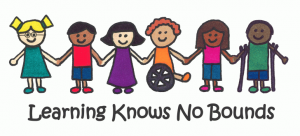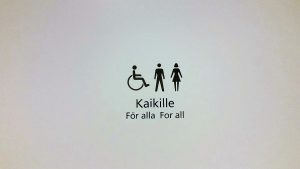During the last few years has the Finnish educational system been object to a wide international interest thanks to PISA success in Finland. A lot of interviews and several documents have been made to the international media about this subject. Hundreds, maybe even thousands, educational experts have visited the local Finnish schools to observe how do we actually teach and study here. Finland has also started to actively market and spread our educational system (the educational “miracle”) outside the Finnish borders.
VIDEO: https://www.youtube.com/watch?v=moCq70Oo6gY
(Video by Finpro Finland: Finnish Exellence in Education)
In this particular video is featured how one of the Finnish achievements is above all others: “the world class education”, which according to the texts of the video means at least high quality education, the professional freedom of the teachers, equal possibilities of studying, and technology and digitalisation of education. While watching the video one can’t help but wonder if it also means being blue eyed and blonde by hair?
At the moment Finnish educational export focuses for example on consulting educational systems, developing curriculas, pedagogic education of the teachers, developing the leading skills of the headmasters, the assessment of the developing of the education, preschooling and -teaching, the special needs -education, technology and the digitalisation of the education and also the vocational education. Despite all of this there has been a worry in the Finnish ministry of the education that Finland has not managed to grow the educational export a big and financially significant business. The clear goal in Finland is at the moment to expand and widen the educational export even more.
The biggest problems in different strategies seem to be the Finnish legislation and the barriers it causes. There are also lacks in the Finnish knowledge of business management. In different strategies local needs and the meaning of working together are left in a minimal position. It can simply be said in passing that in some countries it is not possible to carry out educational export without a functioning cooperation structure with the local people.
In general many critical issues and challenges of education export are not addressed in any way in the strategy documents. Such issues could be for example these phenomena that Andreotti (2011, 191-192) has discussed in his article: North-South power relations, Western supremacy, epistemic privilege and violence, ideas about the origins and justifications of unequal distributions of resources and labor, ethnocentric benevolence/charity, and issues of language, difference, and participation. An important Finnish education export agent, Future Learning Finland, has stated the Persian Gulf area as their main marketing area, especially targeting Saudi-Arabia and also Russia and China. In the future the plan is to expand the marketing towards Southeast Asia. What is prominent in the documents is that enhancing the export is solely based on looking for wide, financially solvent and profitable markets, and not so much on the need of new educational services in these areas.
Of course education export is being done between the “Western” countries as well. For example the concept of Yrityskylä, Me and My City (https://yrityskyla.fi/en/) is being “exported” From Finland over the seas – to Sweden. Yrityskylä is a governmentally funded and functioning institution, and already 70 % of six graders in Finland have participated in the program. It includes about 10 hours of teaching first in school and then the implementation day at the simulation city. The whole idea of exporting becomes interesting in the point where the country that is exporting isn’t actually making any money directly out of the process (governmentally funded). Who benefits and what? It can’t be called colonization, but is it still Western universal knowledge making in this context without the “non-Western” counterpart?
Considering what was discussed at the latest lecture the whole idea of educational export can be questioned. The last sentence of the video “If you want to learn how to learn, ask us, ask Finland” is a perfect example of Western universal knowledge making. In the context of the postcolonial theories that were discussed in the lecture some parts of this Finpro video and the educational export documents seem almost embarrassing – who is this country to tell everyone what to do? At the lecture we also wondered what could be done towards decolonizing education. Suggested methods were for example empowering the victims of colonialism, place-based education and localising the curricula. Ironically, the best educational export “products” are probably the ones that can be adapted to many kinds of contexts and that utilize ideas of for example place-based education.
– Group A: Aino, Mari & Emilia
[1] Koulutusviennin tiekartta 2016–2019. Opetus- ja kulttuuriministeriön julkaisuja 2016:9.
[2] Suomi kansainvälisille koulutusmarkkinoille. Selvitysryhmän muistio. Toimenpideohjelma koulutusviennin edellytysten parantamiseksi. Opetus- ja kulttuuriministeriön työryhmämuistioita ja selvityksiä 2013:9


